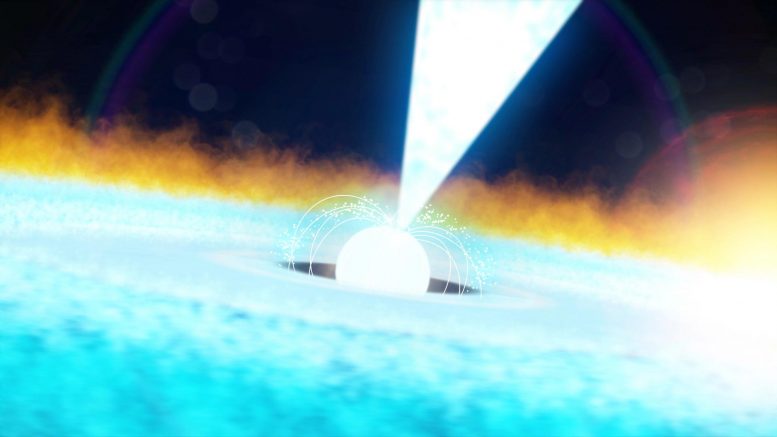
Illustration depicting a Type I X-ray burst. The explosion first blows off the hydrogen layer, which expands and ultimately dissipates. Then rising radiation builds to the point where it blows off the helium layer, which overtakes the expanding hydrogen. Some of the X-rays emitted in the blast scatter off of the accretion disk. The fireball then quickly cools, and the helium settles back onto the surface. Credit: NASA’s Goddard Space Flight Center/Chris Smith (USRA)
NASA’s Neutron star Interior Composition Explorer (NICER) telescope on the International Space Station detected a sudden spike of X-rays at about 10:04 p.m. EDT on August 20, 2019. The burst was caused by a massive thermonuclear flash on the surface of a pulsar, the crushed remains of a star that long ago exploded as a supernova.
The X-ray burst, the brightest seen by NICER so far, came from an object named SAX J1808.4-3658, or J1808 for short. The observations reveal many phenomena that have never been seen together in a single burst. In addition, the subsiding fireball briefly brightened again for reasons astronomers cannot yet explain.
“Once the helium layer is a few meters deep, the conditions allow helium nuclei to fuse into carbon. Then the helium erupts explosively and unleashes a thermonuclear fireball across the entire pulsar surface.” — Zaven Arzoumanian, Deputy Principal Investigator for NICER
“This burst was outstanding,” said lead researcher Peter Bult, an astrophysicist at NASA’s Goddard Space Flight Center in Greenbelt, Maryland, and the University of Maryland, College Park. “We see a two-step change in brightness, which we think is caused by the ejection of separate layers from the pulsar surface, and other features that will help us decode the physics of these powerful events.”
The explosion, which astronomers classify as a Type I X-ray burst, released as much energy in 20 seconds as the Sun does in nearly 10 days. The detail NICER captured on this record-setting eruption will help astronomers fine-tune their understanding of the physical processes driving the thermonuclear flare-ups of it and other bursting pulsars.
A pulsar is a kind of neutron star, the compact core left behind when a massive star runs out of fuel, collapses under its own weight, and explodes. Pulsars can spin rapidly and host X-ray-emitting hot spots at their magnetic poles. As the object spins, it sweeps the hot spots across our line of sight, producing regular pulses of high-energy radiation.
J1808 is located about 11,000 light-years away in the constellation Sagittarius. It spins at a dizzying 401 rotations each second, and is one member of a binary system. Its companion is a brown dwarf, an object larger than a giant planet yet too small to be a star. A steady stream of hydrogen gas flows from the companion toward the neutron star, and it accumulates in a vast storage structure called an accretion disk.
“This burst was outstanding!” — Peter Bult, an astrophysicist at NASA’s Goddard Space Flight Center
Gas in accretion disks doesn’t move inward easily. But every few years, the disks around pulsars like J1808 become so dense that a large amount of the gas becomes ionized, or stripped of its electrons. This makes it more difficult for light to move through the disk. The trapped energy starts a runaway process of heating and ionization that traps yet more energy. The gas becomes more resistant to flow and starts spiraling inward, ultimately falling onto the pulsar.
Hydrogen raining onto the surface forms a hot, ever-deepening global “sea.” At the base of this layer, temperatures and pressures increase until hydrogen nuclei fuse to form helium nuclei, which produces energy — a process at work in the core of our Sun.
“The helium settles out and builds up a layer of its own,” said Goddard’s Zaven Arzoumanian, the deputy principal investigator for NICER and a co-author of the paper. “Once the helium layer is a few meters deep, the conditions allow helium nuclei to fuse into carbon. Then the helium erupts explosively and unleashes a thermonuclear fireball across the entire pulsar surface.”
Astronomers employ a concept called the Eddington limit — named for English astrophysicist Sir Arthur Eddington — to describe the maximum radiation intensity a star can have before that radiation causes the star to expand. This point depends strongly on the composition of the material lying above the emission source.
“Our study exploits this longstanding concept in a new way,” said co-author Deepto Chakrabarty, a professor of physics at the Massachusetts Institute of Technology in Cambridge. “We are apparently seeing the Eddington limit for two different compositions in the same X-ray burst. This is a very powerful and direct way of following the nuclear burning reactions that underlie the event.”
As the burst started, NICER data show that its X-ray brightness leveled off for almost a second before increasing again at a slower pace. The researchers interpret this “stall” as the moment when the energy of the blast built up enough to blow the pulsar’s hydrogen layer into space.
The fireball continued to build for another two seconds and then reached its peak, blowing off the more massive helium layer. The helium expanded faster, overtook the hydrogen layer before it could dissipate, and then slowed, stopped and settled back down onto the pulsar’s surface. Following this phase, the pulsar briefly brightened again by roughly 20 percent for reasons the team does not yet understand.
During J1808’s recent round of activity, NICER detected another, much fainter X-ray burst that displayed none of the key features observed in the August 20 event.
In addition to detecting the expansion of different layers, NICER observations of the blast reveal X-rays reflecting off of the accretion disk and record the flickering of “burst oscillations” — X-ray signals that rise and fall at the pulsar’s spin frequency but that occur at different surface locations than the hot spots responsible for its normal X-ray pulses.
A paper describing the findings has been published by The Astrophysical Journal Letters.
NICER is an Astrophysics Mission of Opportunity within NASA’s Explorer program, which provides frequent flight opportunities for world-class scientific investigations from space utilizing innovative, streamlined, and efficient management approaches within the heliophysics and astrophysics science areas. NASA’s Space Technology Mission Directorate supports the SEXTANT component of the mission, demonstrating pulsar-based spacecraft navigation.
Reference: “A NICER Thermonuclear Burst from the Millisecond X-Ray Pulsar SAX J1808.4–3658″ by Peter Bult, Gaurava K. Jaisawal, Tolga Güver, Tod E. Strohmayer, Diego Altamirano, Zaven Arzoumanian, David R. Ballantyne, Deepto Chakrabarty, Jérôme Chenevez, Keith C. Gendreau, Sebastien Guillot and Renee M. Ludlam, 23 October 2019, The Astrophysical Journal Letters.
DOI: 10.3847/2041-8213/ab4ae1

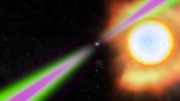
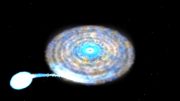
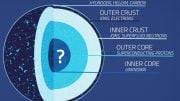
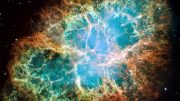
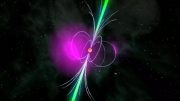
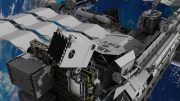
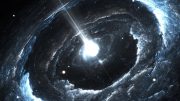
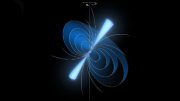
What is the point to this discovery? Money wasted on technology to study events that literally will have no impact on human life. Science and the funding it requires should be directed towards health and the problems associated with EARTH . Knowing about pulsars that light years away from from us and what’s happening on them is a waste of time. We hear about global warming daily..threats of growing deserts,the seas rising and obliterating coastal areas,coral reefs dying…etc etc etc.
Take care of your home first. Humans are millennia away from practical space travel . If ever….
Global warming is a serious issue to our planet. Let’s not be ignorant and forget how we learned about the greenhouse effect in the first place. Oh yeah, it’s from as you say, our country wasting money and monitoring planets such as venus that are in the condition it is because of the greenhouse effect. You would be surprised at how much knowledge we gain from understanding these natural phenomenons that will in time effect us.
NASAs budget is LESS THAN ONE HALF OF ONE PERCENT of the overall US budget. If you’re looking for money to redirect, there are a bunch of better places (like military spending).
Plus, knowledge for knowledge’s sake is so important to push the boundaries of our existence. We can’t limit ourselves to the here and now.
Nailing down how these processes work increases our knowledge of the powerful magicks that created us..and our world- and are well worth the effort and expense – the possible benefits in the real world are nothing short of stupendous – I can see your mind opening to the possibilities already..see that wasn’t so hard. Enjoy!
I agree with Bob.Take care what’s here on earth.Explore our oceans,protect our home and sustain our species and planet not some far out event from billions years ago.
This is pure bulls#!t. The universe is electric and magnetic, gravity is a side effect . the standard big bang model is dead the safire project will prove to you that the sun and all others are electrical in nature. Not gravity’ and gas. Just like the comment down below some one said that we can study venus to prevent its demise happening to us. Venus is a new planet. Our ancestors tell us so as well as many observations that show it’s going the opposite direction
Another example of ignorance piggybacked as facted. OMG. Everyday a new article comes out about a new black hole discovery doing something that it shouldn’t be able to do . So I contend that they have no clue what black holes are. Otherwise I wouldn’t see everyday a new sharticle saying so. Lol The Thunderbolts of the gods a group of real physicists using the real scientific methods not cpu model B’s. Will show you the truth watch their videos for a true understanding of reality. Spacetime. What a joke
Macbook pro socking prize ???
https://www.sarthtya.tech/2019/11/apple-laptop-macbook-pro-aplles-new.html?m=1
NICER is the Astrophysical Opportunity Mission in NASA’s Explorer Explorer program, providing frequent flight opportunities for world-class scientific surveys from space using effective, appropriate management methods. and efficiency in the fields of astrophysical sciences and astrophysics. The NASA space mission mission director NASA supports the SEXTANT component of the mission, demonstrating pulsar-based spacecraft navigation.